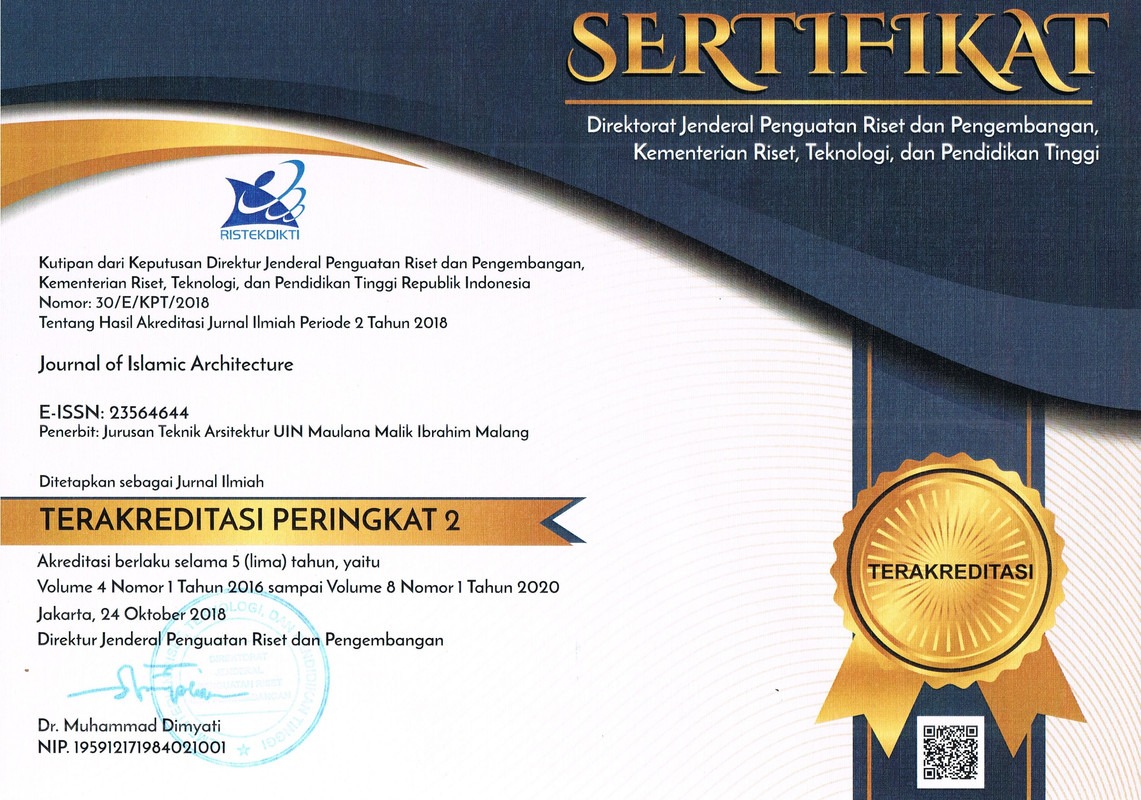SYNCRETIC ARCHITECTURE OF FATEHPUR SIKRI: A SYMBOL OF COMPOSITE CULTURE
Abstract
Abstract
The amalgamation of native Indians and Muslim immigrants eventuated in a prolific way in the realm of literature, art, music, technology and especially in architecture, which reached at its zenith during Mughal period. Akbar, the great Mughal, is greatly recognized for his syncretism and religious tolerance. With the power of his influential personality and eclectic approach, he unified the various artistic traditions and architectural styles in the design of his new capital city, Fatehpur Sikri. Although, the architectural forms and construction techniques involved in the design of city had already been incorporated since the arrival of Islam in Indian subcontinent, but their synthesis reached at its zenith at Fatehpur Sikri and thus traditionally rich and fanciful indian style was merged with the lightness and simplicity of Islamic style. This paper will focus on the unique intermingling of two entirely different styles like their cultures which were born in different regions and with different approaches. This fusion developed a new style in architecture besides several other aspects of life in India.
Keywords: Fatehpur Sikri, Mughal Architecture, Composite Culture, Akbar
Abstrak
Penggabungan India kuno dan imigran muslim menghasilkan banyak literatur, seni, musik, teknologi, dan terutama arsitektur yang mencapai puncaknya selama periode Mughal. Akbar, Mughal yang besar, diakui untuk sinkretisma dan toleransi beragama. Dengan kekuatan pengaruh kepribadiannya dan pendekatan eklektik, dia menyatukan tradisi seni yang bervariasi dan gaya arsitektural pada desain ibukota yang baru, Fatehpur Sikri. Meskipun bentuk arsitektural dan teknik konstruksi terlibat dalam desain kota sudah tergabung sejak kedatangan Islam di India, tapi perpaduannya mencapai puncaknya pada Fatehpur Sikri, jadi gaya India yang fantastis dan kaya secara tradisional digabung dengan kesederhanaan gaya Islam. Artikel ini akan fokus pada pembauran yang unik pada dua gaya yang berbeda seperti budaya yang lahir pada daerah yang berbeda dengan pendekatan yang berbeda. Peleburan ini mengembangkan gaya baru dalam arsitektur di samping beberapa aspek kehidupan yang lain di India.
Kata kunci: Fatehpur Sikri, Arsitektur Mughal, Budaya Komposit, Akbar
Keywords
Full Text:
PDFReferences
Binaca Maria Alfieri. 2000. Islamic Architecture
of Indian Subcontinent. London: Laurence King
Publishing.
R. Nath. 2010. Architecture in Medieval India-
Forms, Context, Histories. Monica Juneja
(Editor). New Delhi: Orient Blackswan.
http://en.wikipedia.org/wiki/Fatehpur_Sikri
Satish Grover. 2002. Islamic Architecture in
India. New Delhi: CBS Publishers and
Distributers. South Asia Books; 1st edition 1996.
Ram Nath. 1987. Fatehpur Sikri. Michael Brand
and Glenn D. Lowry [Editor]. Bombay: Marg
Publication.
Catherine B. Ashar. 2008. The New Cambridge
History of India-Architecture of Mughal India.
Cambridge: Cambridge University Press.
Percy Brown. 1997. Indian Architecture (Islamic
Period). Mumbai: D. B. Taraporewala.
Attilio Pettruccioli. 1987. Fatehpur Sikkri.
Michael Brand and Glenn D. Lowry [Editor].
Bombay: Marg Publications.
DOI: https://doi.org/10.18860/jia.v2i3.2459
Refbacks
- There are currently no refbacks.






